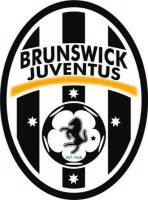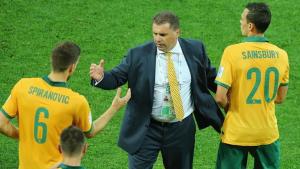DOMINATE TO PRESS, PRESS TO DOMINATE – THE INTEGRATED CYCLE BEHIND THE SOCCEROOS’ SUCCESS
Moreland Zebras Technical Director writes for Leopold Method on the Socceroos in the Asian Cup
Please go to http://leopoldmethod.com.au/dominate-to-press-press-to-dominate-the-integrated-cycle-behind-the-socceroos- for full read and pictures
Leopold Method website can be found www.leopoldmethod.com.au
DOMINATE TO PRESS, PRESS TO DOMINATE – THE INTEGRATED CYCLE BEHIND THE SOCCEROOS’ SUCCESS
After the Socceroos semi-final win over United Arab Emirates, Ange Postecoglou said he was pleased that the Australian public had responded positively to the new look side. Indeed Australia’s determination to dominate possession and territory in has forced many football aficionados to rub their eyes in disbelief. In years gone by we could only dream of seeing this type of football domination.
Postecoglou’s Socceroos team always tries dominates possession, not in the defensive half, but in the dangerous territory ahead of the halfway line. They win it back quickly then tease and bully the opponent into submission and create bagfuls of chances per game at a pace that leaves the viewer breathless and begging for more.
“The desire to fragment continues and separating attack and defence or the transition moments ignores everything that unites them all: the game, the whole. The analysis that is commonly done on Barcelona’s ability to retrieve the ball after losing it: the classical Cartesian vision only considers moments, almost trapped in the photo, and will tend to dignify and celebrate ‘large recovery efforts’ while ignoring the fundamental: the game, the ‘continuum’’. Barca recovers the ball well after losing it, not because their players work hard, but because in the moments before the turnover they had a number of good passes that permitted the team and players to be positioned close together and their opposition were disorganized and forced to retreat.” – Raul Caneda.
As attack and defence are simply two sides of the same scale, they go together and are not separate. The offensive plan determines the defensive setup. It is because the Socceroos maintain possession that they are able to press so effectively and dominate the game. It is a flowing cycle, a “continuum” as Caneda mentions, which ensures that one aspect manifests the other and vice versa.
Postecoglou has created a belief in his squad that they do, in fact, have the tools necessary to keep the ball in tight areas. That confidence has developed into some of the beautiful attacking moves that we have seen throughout the Asian Cup, extremely nimble combinations, one and two-touch passages and interchanges which make the opponent’s defensive system resemble melting butter, sliced apart by the bluntest of knives.
More importantly, Postecoglou’s approach ensures that there are attacking players always in close proximity to the ball, with the exception of one or two players who stay away and act as a free man. This allows for the team, the players, positions and the ball to move close together as a fluid unit. The consequence of this is that when the Socceroos lose the ball, they are already close together and can press more easily after losing it. This becomes very difficult to counter against.
Think back to the hordes of coaches and analysts who unsuccessfully tried to deduce how it was that two of the game’s great artists Andres Iniesta and Xavi Hernandez were able to press so aggressively under Pep Guardiola at Barcelona. Most of us looked to the team’s defensive “structure” or “pressing traps” while others simply resorted to believing that Pep had magically imbued them with a dramatically increased work rate and defensive urgency. It is now well known that Guardiola requires 15 consecutive passes from his players in order to properly set up an attack. This approach also fortifies the team’s ability to advance as a unit, close together.
Closer to home, players like Troisi, Luongo and Kruse – perhaps not renowned for their defensive effort or discipline out of possession – look as if that part of their game is now second nature to them. Swarms of green and gold surround opposition players within seconds of the ball being turned over, the new ball carrier often stripped of possession so quickly that it resembles a cartoon character falling into a river of voracious piranhas.
The Socceroos’ successful and highly aggressive pressing game has very little to do with buzz words like “intensity” and “commitment” and is reliant instead on a more integrated view of the national team’s tactical approach under Postecoglou. In short, the attacking approach determines the way of defending and also alters the game plan of the opposition. This then allows a team to dominate territorially and increase the percentage of chances created.
Rather than trying to identify the team’s defensive organisation once the ball has already been lost, coaches and analysts should look to what is happening before the ball is given away. At where and how the players are positioned when the team is in possession and how that affects the ability to recover the ball if it is lost.
Holistically, the Socceroos’ fresh new attitude under Postecoglou provides the framework for an energetic, assertive yet controlled game plan which has resonated profoundly with the Australian public, who love nothing more than seeing their national team ‘have a go’.











Comments
Comment Guidelines: The SportsTG Network is made up of players, families and passionate sports followers like you who have a strong opinion about sport. That's great - we want you to have your say and share your thoughts with the world. However, we have a few rules that you must follow to keep it fun for all. Please don't be rude, abusive, swear or vilify others. Apart from some pretty serious sport sanctions, we also can ban you and report you if things get out of hand. So play fair and have fun, and thanks for your contribution.